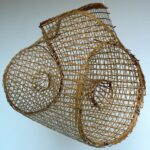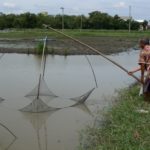The following information was gathered from a Urak Lawoi man who has lived in the Rawai Beach Sea-Gypsy Village for 27 years. He was 57 years old and only had one tooth (incisor) left in the middle of his upper jaw. This friendly person spoke good English, was a fisherman, and had his longtail boat. He has caught two Black Marlins in his life. One was 27 kg heavy, and the other one was 41 kg. I questioned him about the Bottom fish traps being built everywhere on Rawai Beach. His information was recorded in the following. If somebody is interested in seeing YouTube videos on this type of fishing, I can recommend either this or that link.
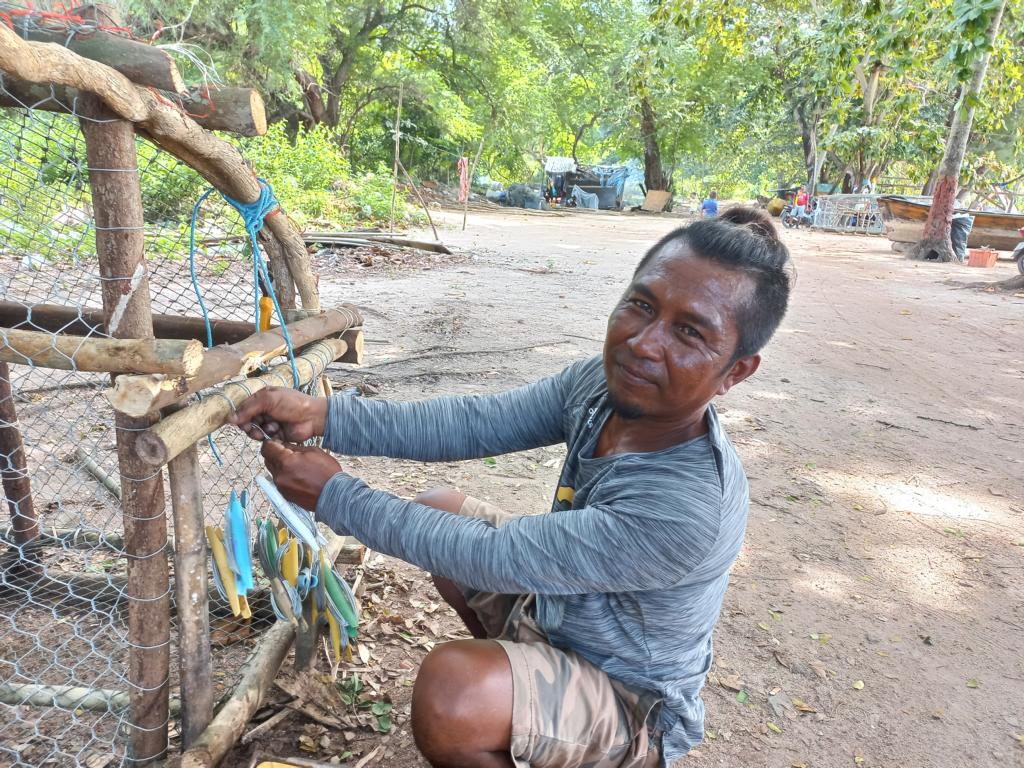
Bottom fish trap design
Each fisherman builds these fish traps for himself. They can not be bought, and the material cost for the fisherman is approximately 3000 THB (Nov 2023).
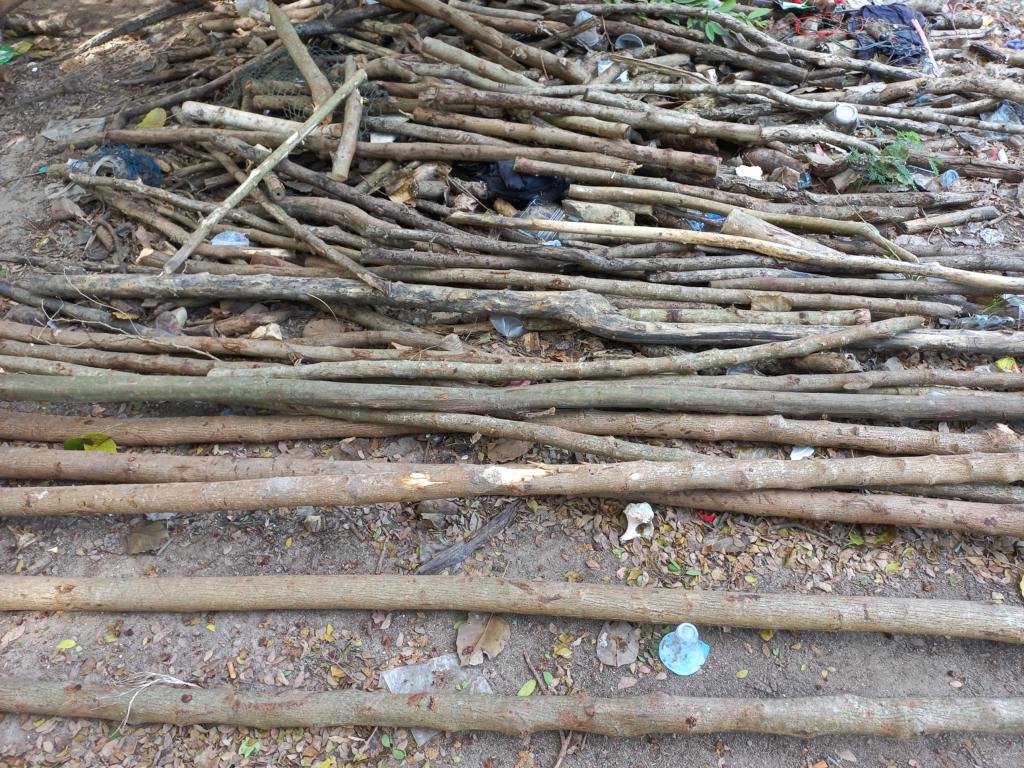
In the past, long-lasting mangrove wood was used for these traps. Not much of this wood is left today, making it difficult to harvest. The fishermen, therefore, use all types of wood they can get their hands on—soft, hard, medium-hard… whatever. It just needs to be the right diameter, straight, and long enough.
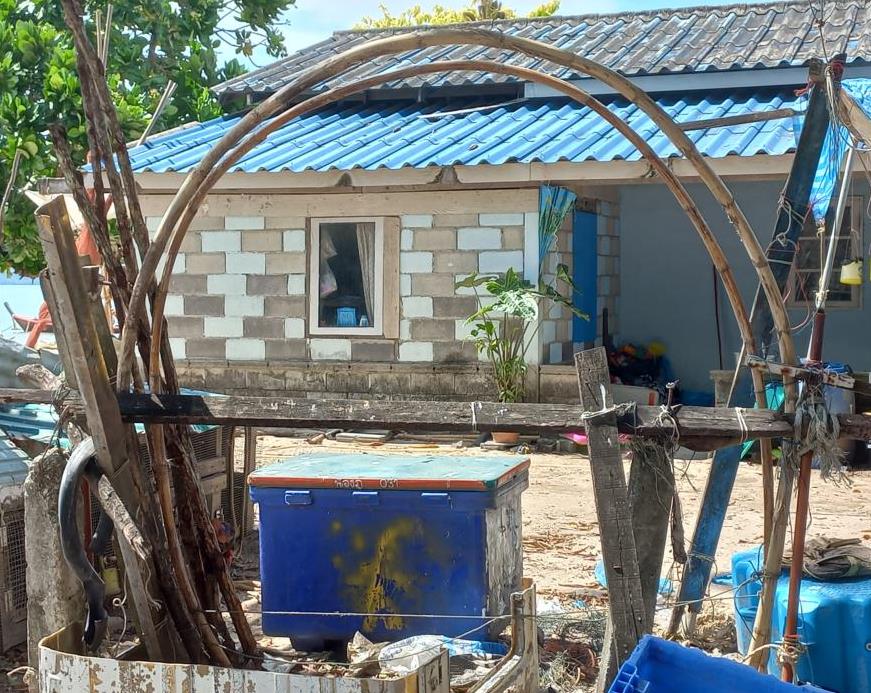
The arches are made of rattan or, more recently, black PVC pipes of the correct diameter (approx. 5 cm / 2’’).
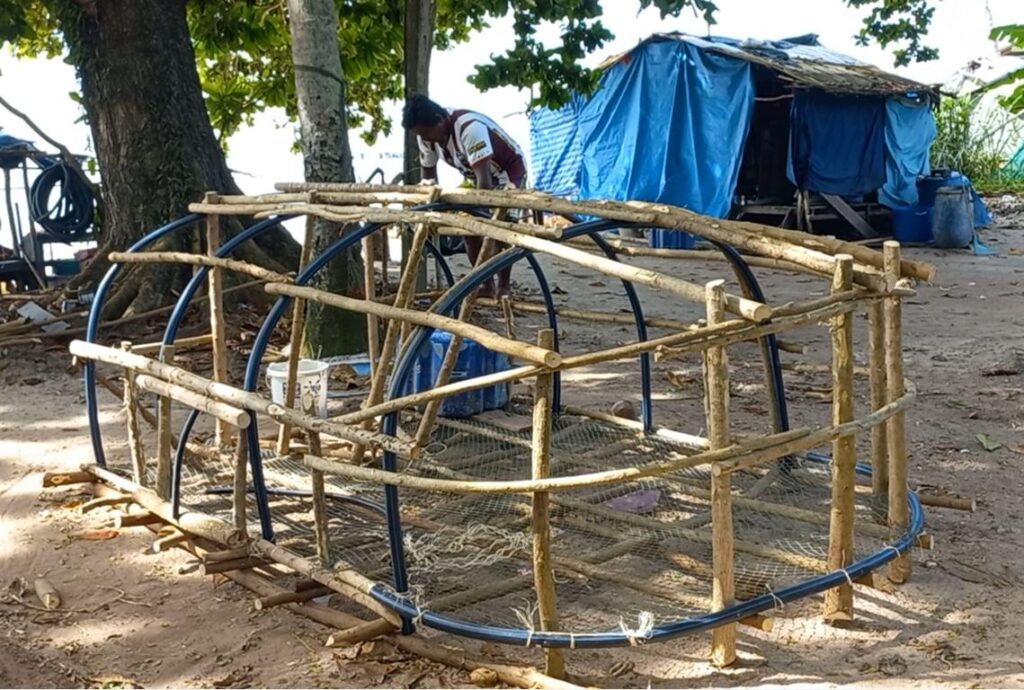
The frame is enclosed with galvanized wire mesh or fishing nets with a mesh size of about 5×5 cm / 2×2’’. An entrance hole, measuring approximately 90×60 cm / 3×2 ft, is left, which serves as an entry opening and is covered separately with a net.
Which fish species are caught?
A wide variety of reef fish are caught, with parrotfish and grouper being the most sought-after as they can be easily sold. The various smaller and more colorful reef fish are often eaten by themselves.
Operation of these bottom fish traps
When finished, these fish traps are towed out to sea and sunk. At the bottom, they are attached to coral or stones with ropes so they cannot float or be washed away. The traps are used in various water depths, from only being flooded at tide to about 30 m. However, the standard water depth is approximately 15 – 20 m.
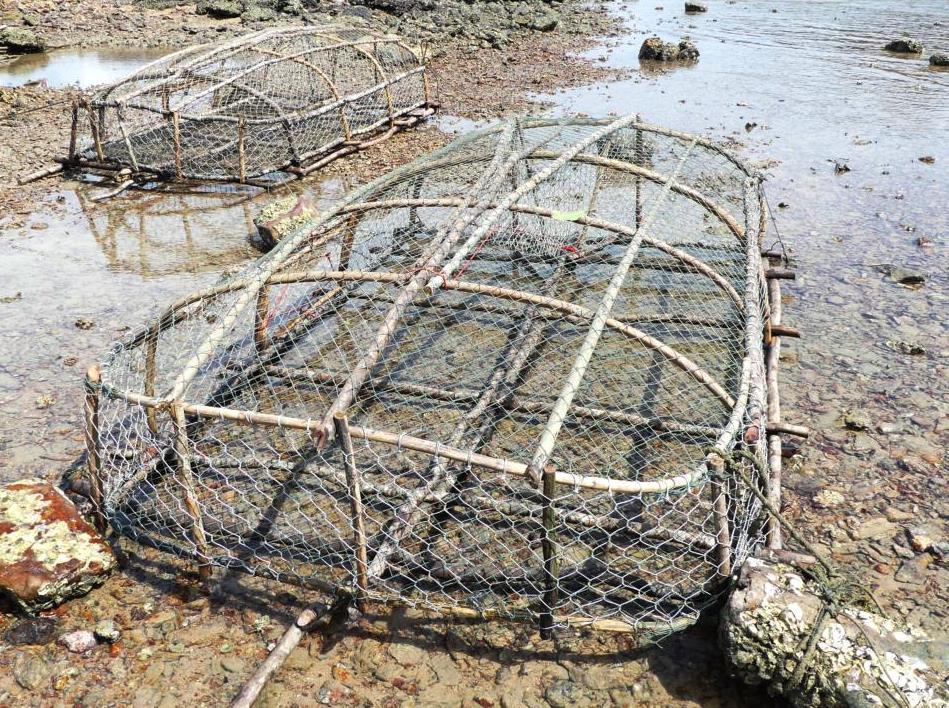
The height of the trap depends on the water depth in which the trap is used. In shallow water, the trap height is very low (approx. 80 cm / 2.6 ft high). Such flat traps can be found on the seafront of San-Ga-U village at Koh Lanta. They are tied down to rocks there and will be checked after every tide. At deep locations, the trap height is quite high (up to 2 m height of the trap). For the standard depth of 15 – 20 m, the trap will be approx. 1.3 m high at the entrance and drops to 90 cm / 3ft towards the back.
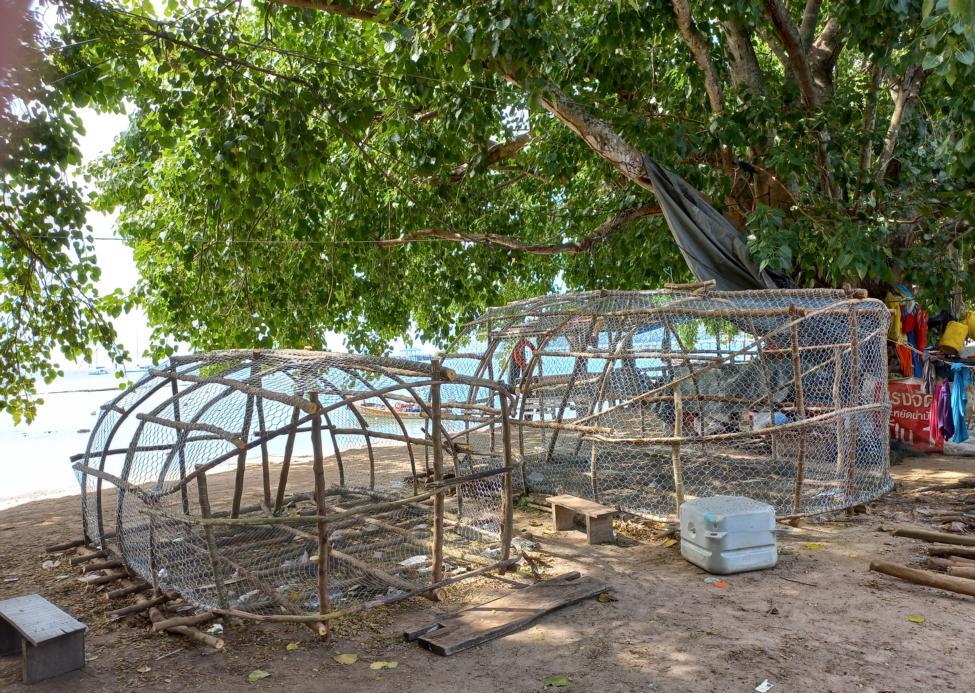
Why are fish entering the trap?
The trapping occurs in such a way that the freshly sunk wood triggers chemical reactions that change the pH value around the wood. This attracts small fish, which then swim around the wood. These small fish attract larger fish, which want to eat smaller ones. They swim into the trap and remain trapped there. The few fish trapped inside now emit distress sounds that attract other large fish. Moreover, according to the source, 10 fish initially caught quickly became 100 fish finally trapped.
The Ural Lawoi man I talked to said he often dived into a trap. He had a compressor on board a long-tail boat with an air hose for breathing. Down at the trap, he deliberately stopped his air supply frequently to hear these distress sounds of the caught fish and imitated them while we talked.
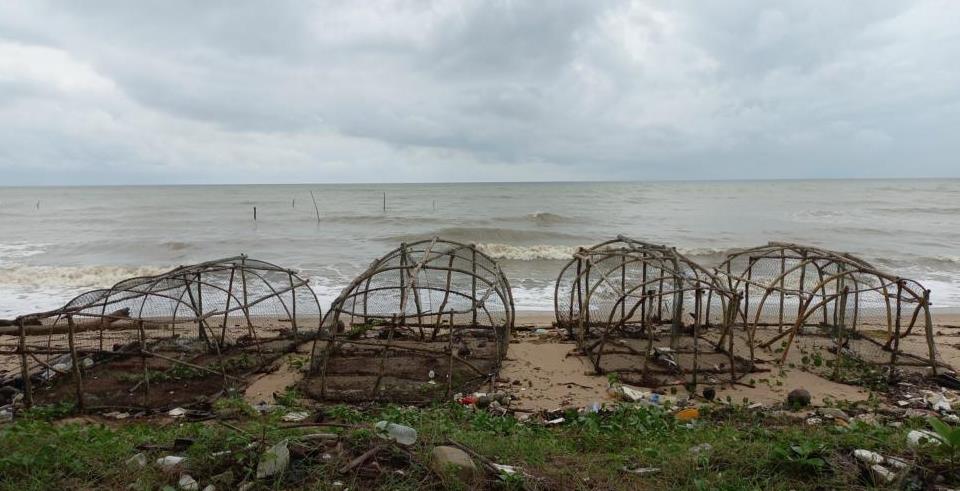
Every fisherman inspects his trap once every week. He dives down with the air hose, opens the net flap, enters the trap, and collects the caught fish with a scoop net. Then he gets out again, closes the net flap, and re-surfaces.
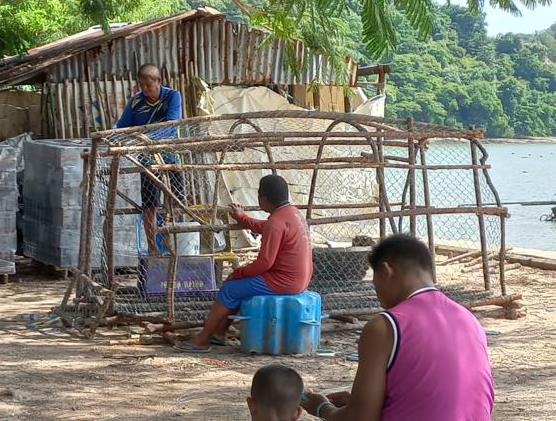
Such a trap can be used for about 6 months and will eventually fall apart. That is why the fishermen build new traps about twice a year.
Lessons learned from Bottom fish traps
- Many settled Urak Lawoi families along the Thai coast of the Andaman Sea are using bottom fish traps for subsistence.
- They build these traps themselves with the help of other fishermen.
- The lifetime of such a bottom fish trap is around 6 months.
- The main attraction for fish to enter such traps is that small fish are curious about the different pH values of the fresh frame wood in the water and its different smells.
- These small fish concentrate in the trap and will be hunted by bigger fish. When these cannot leave the trap, they send distress calls, attracting more big fish.


